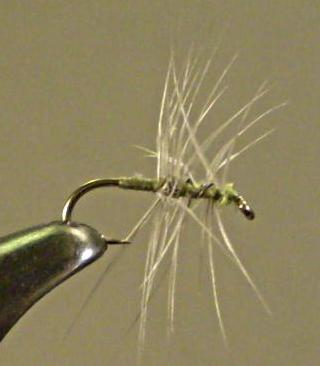Stewart's Spider
A fly that has fast become one of my favorites is the Stewart's Spider. It meets
a lot of the requirements I look for in a good fishing fly: easy to tie, simple,
and catches fish. Originally designed by James Baillie but it became
popularized in a book "The Practical Angler" by W.C Stewart written in 1857
and it is the author's name that became associated with the fly.
Originally there were two types, the Black Spider and the Dun and Orange.
A major distinction between these and conventional Northland spiders, is
as I see it, that the hackle is wound as a palmer over the thorax area rather
than as a collar behind the head of the fly.
I've changed the color combination and altered the tying sequence
to make the tying (at least for me) easier.
I tie two slightly different versions; the one on the left is pretty
much the way the original was tied, the one on the right is one I tie
sometimes which emphasizes the thorax a bit. Each has its own
tutorial although the first three tying steps are the same for both.
I've had some commentary about changing the tying method; so I've added
step by step instructions and a video of the original Black Spider and the
excerpt on tying it by the original author.


